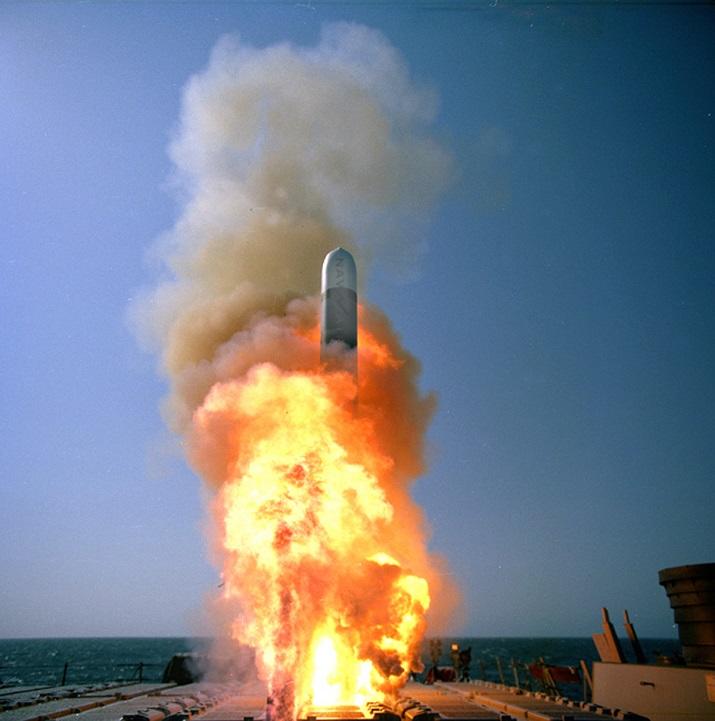Russia has again slammed the United States for being in breach of the Intermediate-Range Nuclear Forces Treaty (INF) after the US announced last Friday that it’s suspending all obligations under the treaty in 180 days, during which time Moscow till has a chance to return to compliance. But this week in an apparent continuing tit-for-tat blame game, the Russian Ministry of Defense (MoD) summoned the US military attaché in Moscow to issue its own ultimatum.
The MoD reportedly told the US diplomatic representative that the US is in breach, and that it could return to compliance through elimination of its cruise missile launchpads and attack drones — the latter which the Russians said fit the definition of a “land-based cruise missile” under a different form, in accord with the Reagan-era deal.

The message was delivered on Wednesday via a treaty-related memo, the contents of which were first reported by RT as follows:
The Russian side suggested that the Americans “return to strict compliance” with the Intermediate-Range Nuclear Forces (INF) Treaty before it expires in six months.
In order to achieve this, the US must “destroy its Mk-41 universal launchers, designed for launching Tomahawk cruise missiles and target missiles,” which in fact have the same specifications as ground-based medium- and shorter-range ballistic missiles prohibited by the INF.
The American attack drones should also be disposed of because they fall under the definition of “land-based cruise missile” in accordance with the deal, the ministry added.
The Russian MoD further said in a press release that it “categorically denies groundless claims of Russia violating its obligations under the treaty.” Ministry spokesman Maj. Gen. Igor Konashenkovm said “the US accusations are false” after Washington accused Moscow of building prohibited missiles and declared it would unilaterally withdraw from the 1987 agreement.
Specifically the Novator 9M729 — a land-based cruise missile which in theory is believed based on recent tests to have a range between 500 and 5,500km, making it illegal under the terms of the treaty — is the chief offender from the US perspective.
This follows President Putin and Foreign Minister Sergey Lavrov making the case on Saturday that “The United States has been violating the treaty since 1999, when it started testing combat unmanned aerial vehicles that have the same characteristics as land-based cruise missiles banned by the treaty,” according to a statement by Lavrov.
Putin and his defense and foreign ministers then slammed US missile defense deployments in eastern Europe, most notably the Mark 41 launch system: “These launchers are fully suitable, as they are for Tomahawk intermediate-range attack missiles,” Lavrov said, which US officials have repeatedly denied.
And in statements on Thursday, perhaps sensing a ‘new Cold War’ kicking into high gear, Russian Deputy Foreign Minister Sergey Ryabkov warned Washington away from trying to contain Russian military power after Putin said “a mirror response” was coming after the INF collapse.
Ryabkov said, according to TASS, “It is vital to conclude that measures for Russia’s military containment will be taken and they will be very tough.” He vowed, “We will respond to them in a tit-for-tat manner.” He painted a picture of Russian readiness to react but not initiate, stressing further, “But (our) colleagues who are now dwelling on how to seriously sting Russia must comprehend all this.”
However, the Russian officials stopped short of addressing the million dollar Europe deployment question that would take the world straight back into a Cold War nuclear showdown. Putin has remained consistent in saying there are no plans to deploy short and mid-range missiles to Europe unless the US does it first — a worst nightmare scenario that has rattled European leaders ever since talk began from Trump that the INF could be scrapped.
But the fact that both Moscow and Washington officials are already openly using phrases to threaten reaction like “tit-for-tat” and “mirror response” is not a good sign for future potential of an arms race and return to nuclear standoff.
via ZeroHedge News http://bit.ly/2BoDD0T Tyler Durden